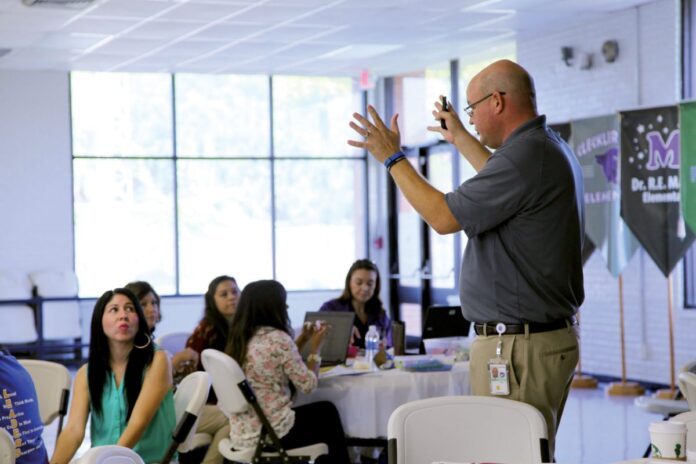WESLACO — If teachers were not aware that they could be certified to use actual lunar and meteorite samples in the classroom, they know now thanks to training sessions the school district has organized in coordination with NASA.
Weslaco ISD held its fourth such session on Thursday at its Professional Learning Center, where Brandon Hargis, education specialist for the NASA STEM Educator Professional Development Collaborative, instructed teachers on problem-solving techniques and where to find otherwise unknown resources that are available to them.
The goal is to pass on what they’ve learned to their students.
Among the resources available is digital badging, an online delivery method in which teachers can receive micro credentials from peers for their body of work accumulated over time, but it’s the ability to check out moon rocks from the Lyndon B. Johnson Space Center in Houston for instructional use that always piques participants’ interest.
“Certifications are provided from the Johnson Space Center to bring moon rocks into classrooms,” Hargis said. “This is for students to learn the similarities and differences between the earth and the moon with actual samples in their hands.”
The training is made possible by a $15 million grant NASA awarded Texas State University in 2014 for teacher training, in which NASA content is provided to educators as well as experimental learning that emphasizes digital technology.
Elizabeth Alaniz, director of professional learning for WISD, said the opportunity to host trainings for local teachers came from necessity.
“I received an email last year inviting teachers to go to NASA for a three-day workshop, but the cost of sending teachers out there would be significant, so I emailed the person back and said why not consider doing it at WISD,” Alaniz said before crediting Superintendent Dr. Ruben Alejandro for supporting the endeavor.
Sessions last three hours and are open to teachers of all grade levels, and although emphasis is placed on science and math, Alaniz and Hargis said there’s something to learn for all studies.
“When people think of NASA, some only think of space and don’t see other connections we have to life science, or art, culture and literacy in the classroom,” Hargis said.
Angela Cavazos, a second grade math and science teacher at Memorial Elementary, said she can attest to as much.
“It gives us ideas and different activities to take back to the classroom, and today was about the sun and beyond,” Cavazos said. “It’s just a way that makes instruction more hands-on. I also wouldn’t have known that we could have access to resources that NASA has available.”
Hargis noted that such resources have been developed from NASA missions.
“They are thousands of these resources available for educators, and our goal is to deliver it in a way that sees them using them in classrooms of students to inspire the next generation of STEM professionals,” Hargis added. “We do that in a variety of ways — through face-to-face workshops usually. That’s only possible through a partnership with a district like Weslaco ISD.”
The NASA training sessions, which Alaniz said the district is working to continue, are also part of the district’s 21st century initiative that Alejandro has long championed.
“In order for these students to be globally competitive, which is becoming archaic with increased space travel and efforts to land on Mars, we need our kids to be thinking on an interstellar level,” Alejandro said. “Their focus won’t be global anymore. So how do we prepare them? We give them the latest and greatest in critical thinking and collaboration, so they’ll be able to adapt to and solve future problems that we don’t know even exists yet.”





